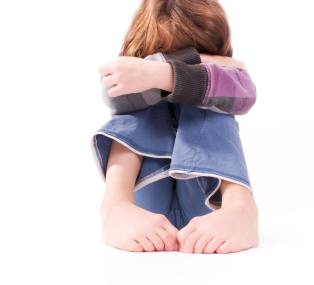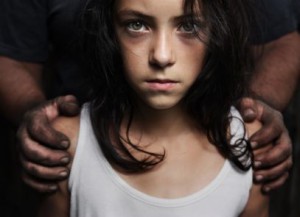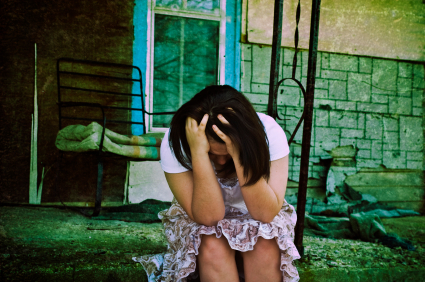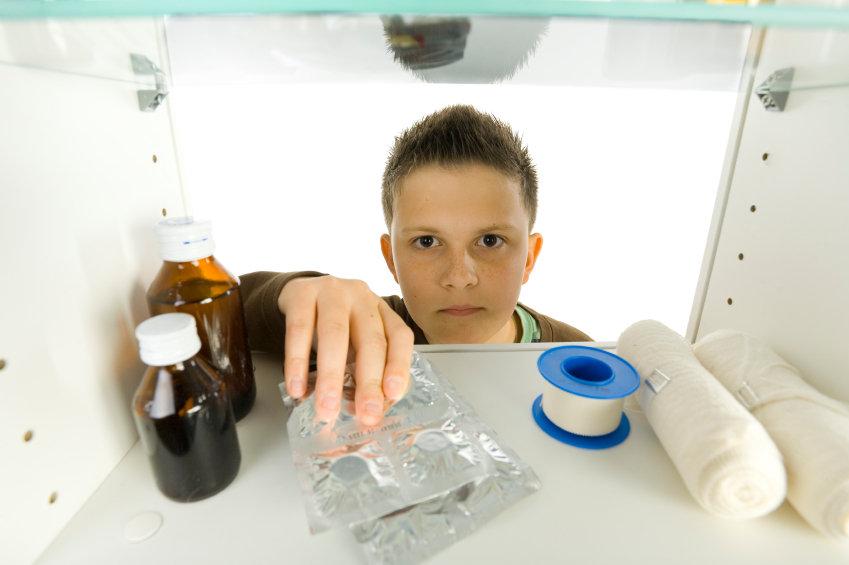 What this powerful quote means, is that by exposing children to the idea of tolerance through education, the power to make a lifelong positive difference in both their lives and the future of society greatly increases.
What this powerful quote means, is that by exposing children to the idea of tolerance through education, the power to make a lifelong positive difference in both their lives and the future of society greatly increases.
Teaching tolerance is a vital step towards reducing bullying and harassment as it is often a result of the combination of intolerance and violence.
Everyone is unique, as adults growing up in a diverse society, we know this. But many children are exposed to cultural, social and religious differences when they begin school. How they act, and react to this difference can determine whether they become the bully, the victim or just a witness.
Children learn tolerance from their parents and teachers, so it is important to remember what Helen Keller’s quote means; “Your actions, or lack of action regarding someone being intolerant of another can be very powerful. The result can turn into a positive change or a negative outcome.”
KIDPROOF BULLYPROOFING COURSE (pdf)
KIDPROOF SAFE SPORT COURSE BROCHURE (pdf)
KIDPROOF I WANNA WALK COURSE BROCHURE (pdf)
ORDER KIDPROOF SAFETY LESSON PLANS FOR YOUR SCHOOL
LEARN MORE ABOUT OUR PARENT EDUCATION
KPASS: PROFESSIONAL DEVELOPMENT AND SAFETY CERTIFICATION FOR INDIVIDUALS THAT WORK WITH KIDS
In order to stop bullying, one must first be able to identify it. 
Nearly everyone has been bullied at some point during their lives. Bullying occurs everywhere. This can be at school, in the workplace, or on a sports field. Any time that there is a person in a position of ‘power’ over another person, there is potential for bullying.
Bullying is an accumulation of negative actions, like name calling, threats, or violence by one person to another to cause them to feel fearful or excluded.
Cyber bullying is bullying through technology. Because kids are almost always “connected” these days, cyberbullying has become a great concern for many kids and parents.
A bully can spread rumors, hurtful messages, and even morph pictures onto a personal website (eg. Facebook) in a matter of minutes by using cell phones text messaging, instant messages, web pages, and email.
Worse, kids who are victims of cyber bullying have few places to hide. Rumors are spread quickly and potentially to hundreds at once, so the reach is much wider than with face-to-face bullying.
With the ease, and apparent anonymity of the internet, technology has empowered more kids to become bullies who otherwise would not be capable of bullying. Anyone, whether meek, shy, small or afraid, can now cyber bully.
Cyber bullying is unique because you don’t have to be able to physically back up your threat and a simple email can cause tremendous damage to the self esteem of a victim.
However, the good news is that contrary to popular belief, the Internet is not anonymous. There are many ways that parents and kids can find out the origin of the messages, and eventually contact the Internet service provider (ISP) or even the police if necessary.
What is important to understand is that kids often don’t report cyber bullying because they are concerned that their parents will over react and unplug the Internet, take their cell phone away or another piece of technology that they don’t want to lose.
Although parents are well meaning, in an attempt to protect their kids from cyber bullies, they often end up punishing the victim, rather than acting on the bully’s actions.
Dealing with a cyber bully is similar to a face-to-face bully. The only difference is the means by which the cyber bully connects with their victim.
Bullies use tactics to try to gain control of their target. They use these tactics to create fear in the person who is the target of their actions, and once that fear has been created, the bully now has control.
Some bullying tactics include the following:
• Name Calling (verbal aggression)
• Physical Violence (use physical aggression)
• Threats
• Intimidation
• Isolation (isolation or rejection)
• Spread rumors
• Cyber bullying (threatening or harassing emails)
There are a number of fantastic resources on tolerance available on the Internet that we encourage you to read to help you understand this much layered, very important and often controversial subject. (for starters try www.tolerance.org)
KIDPROOF BULLYPROOFING COURSE (pdf)
KIDPROOF SAFE SPORT COURSE BROCHURE (pdf)
KIDPROOF I WANNA WALK COURSE BROCHURE (pdf)
ORDER KIDPROOF SAFETY LESSON PLANS FOR YOUR SCHOOL
LEARN MORE ABOUT OUR PARENT EDUCATION
KPASS: PROFESSIONAL DEVELOPMENT AND SAFETY CERTIFICATION FOR INDIVIDUALS THAT WORK WITH KIDS
Register today to become a Kidproof Authorized Delivery Partner. Registration is FREE.

Our child safety classes are fun, entertaining and memorable. Kids learn through role play, scenarios and group work to help develop their critical thinking skills that will last a lifetime.
Learn More

Kidproof Safety’s highly acclaimed Protect Ed K-12 Safety Curriculum, becomes mandatory training throughout Lebanon in September
Learn MoreStay in the know with Kidproof News.
Subscribe today!
For good reason, we often focus on teaching children and their parents how to prevent abduction, but attention also needs to be turned to understanding the type of person that abducts children. We would all like to think that the only person who could possibly abduct a child would be an insane psychopath who despises children and gets pleasure from hurting them and their families.
If this were the case, it would seem easier to understand. Some child abductors are indeed psychopaths with no remorse or conscience, but many are not. According to the FBI, there are four different categories of child abductors.
These are individuals, typically male, who seek children for sexual gratification. They identify with children and focus on luring children away with tricks, gifts, bribes, or a combination of lures. They feel a sense of attachment to children and may truly believe that they have children’s best interests at heart. Pedophiles account for the largest number of non-family child abductors.
These individuals abduct children for profit – also known as human trafficing. They may trade them in underground child pornography rings, or sell them for adoption.
These individuals focus on control and power, and are motivated by a fantasy. They are well planned and methodical.
We have all heard of baby kidnappings from childless mothers. These abductors tend to abduct children because they have not been able to have children of their own or have recently lost one. They are predominantly women, are often caught and usually do not intend to physically harm the child. Although women will abduct children, non-family abductions are typically committed by men.
Child abductors are seldom the creepy-dirty-old-man-type that many people believe them to be. The average age of an abductor is only twenty-seven years old. Most are unmarried, unemployed, lives with their parents, move residences often, and have histories of drug, alcohol, or sexual problems. They almost always have a violent past. These are all characteristics which, on their own, might mean little, but in combination should be considered warning signs.
KIDPROOF SAFETY COURSES OVERVIEW
KIDPROOF STRANGER SMARTS BROCHURE (pdf)
KIDPROOF I WANNA WALK BROCHURE (pdf)
ORDER KIDPROOF SAFETY LESSON PLANS FOR YOUR SCHOOL
 Preferential child molesters – pedophiles – have distinct patterns of behavior that are highly predictable. As a parent, it is crucial that you learn to identify these patterns as warning signs, as they are an extremely valuable tool in assessing whether someone represents a risk to your children.
Preferential child molesters – pedophiles – have distinct patterns of behavior that are highly predictable. As a parent, it is crucial that you learn to identify these patterns as warning signs, as they are an extremely valuable tool in assessing whether someone represents a risk to your children.
Each one of these characteristics, taken on their own, can mean little, but if you can identify a large number of them in an individual you know, you need to remove that person from your child’s environment and never allow him to have unsupervised access.
1. Shows an intense interest in children and childlike things.
It is hard not to care about kids. In fact, you may be suspicious of those who show no interest in children at all. However, there is a balance between average or appropriate interest, and excessive interest. Pedophiles will find everything about your child interesting, seem to relate to them better than adults, and prefer their company.
2. Has idealistic views of children.
A pedophile may refer to children as pure and innocent, and put them on a pedestal. They may think of children as “projects” offering them extra help after school, for instance, or arranging meetings with the child for ostensibly good and honest reasons. They will likely invest a great deal of time and effort in one child, rather than offering equal attention to an entire group of kids. Some pedophiles have a belief that they are looking out for and have genuine love for children.
3. Has limited peer relationships.
A pedophile feels more comfortable around children. They do not often associate with peers in their age group. They would much prefer to sit at the “children’s table” at a dinner party than with the adults.
4. Calls children “friends.”
Pedophiles will surround themselves with childlike things that attract children and encourage friendships. A pedophile will often be the “cool older guy” in town, and you may find that many kids hang out at his house. He will attract kids with his lack of rules and defiance of parental rules and controls.
5. Is over twenty-five years old, single, never married, lives alone or with parents.
Just because someone matches this description does not mean he is a pedophile. However, if he meets several other criteria listed here, you should be seeing this as a warning sign.
6. Moves often and unexpectedly.
Often pedophiles will feel they have “worn out their welcome” in a particular community, or feel they are close to getting caught. They will move regularly to avoid detection, confrontation from suspecting parents, or to find a new pool of victims.
7. Participates and organizes activities that exclude other adults.
For obvious reasons, a pedophile needs access and privacy to commit the abuse. He will avoid inviting other adults on planned events or outings.
8. Takes excessive photographs of children.
Pedophiles collect photographs, mementoes, symbols, and anything else from their victims and or other targets that might enhance their fantasies. Most notably, they take an inappropriate number of pictures or videos of children, in their communities, at events, or simply when playing. The pedophile may also have a lot of child-focused movies or music, more than seems appropriate for a single man to possess. These are used for fantasy as well as to lure children into their homes.
9. Works and plays in areas that attract children.
Pedophiles typically choose work environments that allow access to children. This may include working in a school (as a teacher or in some other capacity) or daycare, as a coach or as a volunteer in a community centre, or in any other profession that is child focused.
10. Decorates his home with childlike décor.
A pedophile is constantly trying to attract children, and relates to them better than to adults. His home, dress, and demeanor will often reflect childlike characteristics.
11. Is over generous with gifts.
Many pedophiles choose targets that are needy—both for material things and for attention. They are quick to provide a needy child with toys, games, and money to lure them into a position of trust and eventually a sense of indebtedness.
Parents are the ones that decide who comes into their kids lives, not the kids. Always pay close attention to people who associate with your kids. If you have a bad feeling about someone, or your child expresses discomfort, listen. Don’t look for proof that your instincts are right or wrong. Trust them. They are always right.
 CALLING ALL CHILD CENTRIC BUSINESSES: Is your Child Protection Policy up to date?
CALLING ALL CHILD CENTRIC BUSINESSES: Is your Child Protection Policy up to date?KIDPROOF SAFETY COURSES OVERVIEW
KIDPROOF STRANGER SMARTS BROCHURE (pdf)
KIDPROOF I WANNA WALK BROCHURE (pdf)
ORDER KIDPROOF SAFETY LESSON PLANS FOR YOUR SCHOOL
Register today to become a Kidproof Authorized Delivery Partner. Registration is FREE.

Our child safety classes are fun, entertaining and memorable. Kids learn through role play, scenarios and group work to help develop their critical thinking skills that will last a lifetime.
Learn More

Kidproof Safety’s highly acclaimed Protect Ed K-12 Safety Curriculum, becomes mandatory training throughout Lebanon in September
Learn MoreStay in the know with Kidproof News.
Subscribe today!
 As the Internet has become such a prevalent part of the lives of adults and children, it is important that we begin the dialogue with children about cyber safety from a very young age. The Internet allows people to be online reading books, playing games, and chatting with friends. While our younger students may not be doing these things online yet, we need to prepare them to make sure that they know how to stay safe while online.
As the Internet has become such a prevalent part of the lives of adults and children, it is important that we begin the dialogue with children about cyber safety from a very young age. The Internet allows people to be online reading books, playing games, and chatting with friends. While our younger students may not be doing these things online yet, we need to prepare them to make sure that they know how to stay safe while online.
We discuss and reiterate four main rules throughout our CyberSafe Early Years program. They are rules that young children can understand and do not lead to fear of the Internet.
KIDPROOF SAFETY COURSES OVERVIEW
KIDPROOF CYBERSAFE EARLY YEARS BROCHURE (pdf)
KIDPROOF CYBERSAFE YOUTH BROCHURE (pdf)
KIDPROOF SOCIAL NETEQUITTE BROCHURE (pdf)
ORDER KIDPROOF SAFETY LESSON PLANS FOR YOUR SCHOOL
 To keep the lines of communication open and ensure your child has a safe personal website (Facebook etc), ask them to show it to you – but first, give them 24 hours notice.
To keep the lines of communication open and ensure your child has a safe personal website (Facebook etc), ask them to show it to you – but first, give them 24 hours notice.
What? If you give them notice won’t they just clean it up before you get a chance to see it? Yes. But that is a good thing.
Let me explain.
When you give your kids 24 hours notice, it forces them to comb through their site specifically looking for potential dangerous or inappropriate content. This could include images, posts, songs, messages and even links to online friends that you have not approved.
It will make them think about and read every piece of information on their site, and remove what they think is inappropriate. In the process, your kids will develop vital critical thinking skills essential to online safety.
Your goal is not to catch your kids doing something wrong but to “catch them doing something right” by encouraging trust and open communication. It doesn’t matter that they may have deleted portions that you will never see, what matters is that they took a close look at their site, thought about the content, determined it was not appropriate or safe and removed it – themselves.
In addition to telling kids how to be safe, you need to empower them to use the lessons you provided. When possible, give kids time to think about their actions and they will almost always know right from wrong.
Review their site often and use the 24 hour notice frequently. Talk about the content and if they continue to follow your house rules, they will remain safe while enjoying the net.
As they grow older and move from social networking sites to teen virtual nightclubs, you will have forced them to develop the skills they need to make safe choices.
Instead of pulling the plug altogether, parents can combat a cyber-bully through swift, consistent and persistent tactics. Here are five ways to respond if your child is a target of cyber-bullying.
Save all communication
Through instant messaging, cell phones and on other devices used by the bully. Contrary to popular belief, the Internet is “not” anonymous and these devices leave trails often leading to the culprit.
Report the incident to the school principal.
They may not have the authority to act on the information if the incident occurred outside of school, but it’s important for the school to know that there is a problem
Contact the bully’s parents and discuss your concerns.
Don’t be surprised if you are met with resistance. Bullying is a learned behavior and often child bullies, come from a bullying environment.
Contact the ISP (Internet service provider)
You should alert your ISP from where the messages are coming from. Cyber-bullying is against the code of conduct of most ISP’s and if you have saved the messages, the ISP may be able to shut down the bullies account.
Talk to your kids and discuss your concerns.
Do not over react, but ensure them that you are there to listen and to help them.
In addition, schools need to be prepared and think ahead when writing their policy on dealing with cyber-bullying. They need to address the complex issues of how technology can aid the bully in both their actions and their ability to escape punishment.
To effectively combat the cyber-bully, parents, educators and law enforcement must continue to work together and towards creating strategies that help protect kids from this serious growing problem.
KIDPROOF SAFETY COURSES OVERVIEW
KIDPROOF CYBERSAFE EARLY YEARS BROCHURE (pdf)
KIDPROOF CYBERSAFE YOUTH BROCHURE (pdf)
KIDPROOF SOCIAL NETEQUITTE BROCHURE (pdf)
ORDER KIDPROOF SAFETY LESSON PLANS FOR YOUR SCHOOL
Register today to become a Kidproof Authorized Delivery Partner. Registration is FREE.

Our child safety classes are fun, entertaining and memorable. Kids learn through role play, scenarios and group work to help develop their critical thinking skills that will last a lifetime.
Learn More

Kidproof Safety’s highly acclaimed Protect Ed K-12 Safety Curriculum, becomes mandatory training throughout Lebanon in September
Learn MoreStay in the know with Kidproof News.
Subscribe today!
 There are unique risks that come with being a female in Western society. But if your daughter learns to make safe choices as a teen, she will continue to be safe throughout her life. If you have not yet begun to provide your daughter with the principles and tactics that will keep her safe, now is the time to start.
There are unique risks that come with being a female in Western society. But if your daughter learns to make safe choices as a teen, she will continue to be safe throughout her life. If you have not yet begun to provide your daughter with the principles and tactics that will keep her safe, now is the time to start.
Parents of teenage daughters most often fear sexually motivated crimes, Crimes such as sexual assault and abduction, as well the possibility that their daughter will contract a sexually transmitted disease, top most parents list of worries.
Violence is most often perpetrated by acquaintances or boyfriends of your daughter rather than by complete strangers. The risk of sexual assault to your daughter by someone she knows is far greater than you may think.
How can you prevent your daughter from becoming a statistic? The first thing you have to accept is that your daughter, because she is a female, is a target. It is estimated that girls are almost three times more likely to be victims of sexual abuse than boys. But being a target doesn’t have to equal to becoming a victim.
KIDPROOF SAFETY COURSES OVERVIEW
KIDPROOF A GIRLS WAY BROCHURE (pdf)
ORDER KIDPROOF SAFETY LESSON PLANS FOR YOUR SCHOOL
LEARN MORE ABOUT OUR PARENT EDUCATION
 As the song goes, “Breaking up is hard to do”. This is especially true if an obsessive, abusive, and possessive boyfriend is involved.
As the song goes, “Breaking up is hard to do”. This is especially true if an obsessive, abusive, and possessive boyfriend is involved.
If your daughter has acknowledged she is in an abusive relationship, and is ready to break it off, it is crucial that she do so completely and finally. There is no room for gestures such as “let’s just be friends” or “maybe we need a break for a while.” All communication must stop, including phone calls, letters, or messages passed through common friends. If your daughter responds just once to a gesture, even something as simple as a wave from across the street, he will interpret this as an opportunity to re-enter her life.
She may only be wanting to be nice, but he will see it as a reason to hope for reconciliation.
If your daughter’s ex-boyfriend does not respect her wishes to cease having contact with him, and he persists in trying to get in touch with her, it is important that you respond immediately. You will need to let everyone know that this ex-boyfriend poses a threat. Do not try keep it a secret. It is imperative that you inform your neighbors, the school, and other family members of the breakup; only in this way can all those who care about your daughter’s safety be helpful in watching for warning signs and keeping her safe.
You will also need to contact the police.
It is a crime to repeatedly harass, make contact (either directly or indirectly), follow, watch, or threaten someone. It’s commonly referred to as stalking, and it’s taken very seriously. Broken obsessive and possessive relationships can quickly turn violent and even deadly if action is not taken at the very start.
There are several ways that police can assist you in putting up legal protection for your daughter and your family. Each will depend on the evidence and specifics of the case and not all will result in the arrest and criminal charge of the ex-boyfriend. It is important to understand, though, that legal protection does not equal physical protection.
The most common response from the police will be to issue a restraining order against the offending party. A restraining order is a legal agreement and to breach it is a crime. Many cases of criminal harassment do settle down once a restraining order is in place. However, you should remember that an obsessive ex-boyfriend may be more concerned with seeing your daughter than with committing a crime.
If you are considering a restraining order, realize that it is a layer of protection that confirms your daughter’s desire to break off communication, but it will not physically protect her or your family.
It is true that there are tragic cases where harassment and domestic violence escalate to the point of murder. In some of those cases, restraining orders are in place and do not ultimately protect women from the men who are determined to destroy them. Yet it is still important to make the initial complaint. Names, addresses, and vehicles can be flagged by the police as a high risk of domestic violence and these can assist the police in attending to a call more quickly—if it ever comes.
Unfortunately, often the police are not called soon enough because the victim is afraid of causing her ex-boyfriend to be charged with a crime, or because she is afraid of confronting him in court. Keep in mind that criminal charges are not always the result of a criminal harassment investigation.
It is vital that you and your family seek outside help in dealing with a persistent ex-boyfriend and support your daughter through this very difficult test of strength. In order to truly be protected, she must completely remove herself from the relationship, heal from the wounds it has caused, and move on to find the relationship she deserves.
Kidproof believes that every human has the right to be safe and free from violence regardless of their age, gender, religious belief or any other factor. Recently, Kidproof India helped raise the issue of protecting girls and women from violence by hosting a Girls Way program for hundreds of young girls; all of whom are now empowered to make safe choices for now and the future.
Way to go Kidproof India!
KIDPROOF SAFETY COURSES OVERVIEW
KIDPROOF A GIRLS WAY BROCHURE (pdf)
ORDER KIDPROOF SAFETY LESSON PLANS FOR YOUR SCHOOL
Register today to become a Kidproof Authorized Delivery Partner. Registration is FREE.

Our child safety classes are fun, entertaining and memorable. Kids learn through role play, scenarios and group work to help develop their critical thinking skills that will last a lifetime.
Learn More

Kidproof Safety’s highly acclaimed Protect Ed K-12 Safety Curriculum, becomes mandatory training throughout Lebanon in September
Learn MoreStay in the know with Kidproof News.
Subscribe today!

As scary as it is to think of your kids using drugs, the truth is that most youths do not end up using and abusing drugs.
However, it is common for kids to be exposed to many forms of drugs as they grow up, which can increase their risk of experimentation and potential future abuse. Some will experiment because of curiosity, some will be pressured by peers and others and may turn to drugs as a way to deal with personal stress and pressures.
The good news is that you have more control over keeping them from drug use than you often realize. As a parent, you have the ability to prepare your kids for the stress and pressures they will face as they mature, as well as encourage them to think critically about drug use. Despite how difficult the task may feel at first, it is possible to raise healthy, happy children that are free from drug use.
KIDPROOF SAFETY COURSES OVERVIEW
KIDPROOF DRUG & ALCOHOL AWARENESS PRE-TEEN BROCHURE (pdf)
KIDPROOF DRUG & ALCOHOL AWARENESS TEEN BROCHURE (pdf)
ORDER KIDPROOF SAFETY LESSON PLANS FOR YOUR SCHOOL
 As kids turn into pre-teens, they may begin to distance themselves from their parents, feeling that they have nothing in common or that they do not understand what it is like to be a kid. However, the reality is, that parents are their kids strongest role models, even through the often turbulent teen years.
As kids turn into pre-teens, they may begin to distance themselves from their parents, feeling that they have nothing in common or that they do not understand what it is like to be a kid. However, the reality is, that parents are their kids strongest role models, even through the often turbulent teen years.
As your kids grow, they are influenced by your behavior, stress management, how you react to pressure and even your values. They will often respond to problems the same way they see you do. It is impossible not to be an influence on your child’s personality and behavior – you are setting the pattern for the way they will live, which can be difficult to change later on, whether it is positive or negative.
When it comes to drug, tobacco, or alcohol use, you should take an inventory of what your child is seeing within your own home and behavior. Responsible use is acceptable, but take notice if your child is witnessing any illegal, excessive use or even abuse within their family circle.
Depending on the current influences, families can protect a child from future drug use, as well as increase the risk of use and future problems. In other words, what you do—or do not do—has a big impact on your child’s decisions about using or not using drugs.
What you do, or do not do, has a big impact on whether your child will use drugs in the future
There is no single better way to keep your kids safe than by creating a trusting relationship where your kids believe that it is safe to share their feelings with you. Never forget, that you are the best influence on your child’s decision making.
Doing things together from a young age will help build the foundation of trust. Include your kids in family activities, play with them, engage in conversations with them at natural times, not only when there is a problem. Try not to panic when they tell you their feelings. Although some things they may tell you will make you worry or angry. It is best not to show them your fear straight away. This can often lead them to disengage, and be less likely to open up.
Making an effort to get to know your child can be one of the most important investments in time that you will make.
KIDPROOF SAFETY COURSES OVERVIEW
KIDPROOF DRUG & ALCOHOL AWARENESS PRE-TEEN BROCHURE (pdf)
KIDPROOF DRUG & ALCOHOL AWARENESS TEEN BROCHURE (pdf)
ORDER KIDPROOF SAFETY LESSON PLANS FOR YOUR SCHOOL
Register today to become a Kidproof Authorized Delivery Partner. Registration is FREE.

Our child safety classes are fun, entertaining and memorable. Kids learn through role play, scenarios and group work to help develop their critical thinking skills that will last a lifetime.
Learn More

Kidproof Safety’s highly acclaimed Protect Ed K-12 Safety Curriculum, becomes mandatory training throughout Lebanon in September
Learn MoreStay in the know with Kidproof News.
Subscribe today!